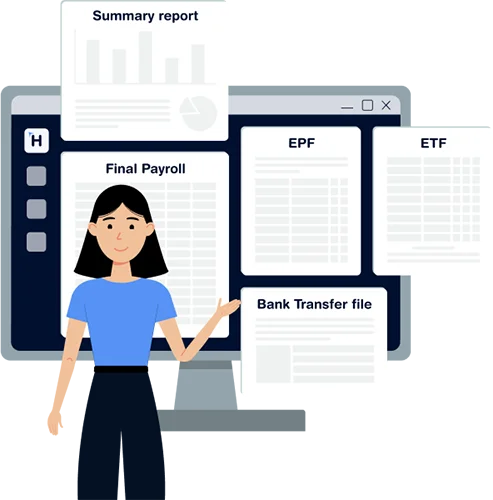When growing from a handful of employees to a team of 20 or more, one of the first things that needs structure is the company’s leave policy. Without a formal leave setup in a small business, employees are often unsure of their entitlements, managers make ad-hoc decisions, and payroll becomes a mess at the end of the month.
But setting up a proper leave policy doesn’t need to be complicated, especially when you have an HR software system that simplifies the entire process. Here’s how SMEs in Sri Lanka can use HR software to set up, manage, and automate their leave policies for smoother day-to-day operations.
Why SMEs Need a Clear Leave Policy
Even if your team is still small, establishing a leave policy early helps avoid confusion later. It ensures that:
- Everyone knows what they’re entitled to
- Leave is taken in a fair and planned manner
- There’s proper documentation and consistency
- You avoid disputes about approvals and payroll deductions
A good HRIS system (Human Resource Information System) helps you enforce your policy while removing the burden of manual tracking from HR or admin staff.
1. Define Leave Types and Eligibility
The first step in setting up your leave policy is deciding which types of leave your business will offer, and to whom. Common types include:
- Annual Leave (e.g. 14 days for full-time staff)
- Casual Leave
- Sick Leave
- No-Pay Leave
- Maternity or Paternity Leave
- Special Leave (religious, study, etc.)
How HR Software Helps:
Modern HR systems let you configure custom leave types and assign them based on employee category, for e.g., permanent, probationary, or contract staff. You can also set eligibility rules, such as leave being available after a probation period.
2. Automate Leave Accruals and Entitlements
One of the most error-prone areas in SME HR is manually calculating how much leave someone has earned. This gets more complex with new joiners, part-time staff, or prorated leave based on start dates.
How HR Software Helps:
With the right HR system, you can set rules for how leave accrues: monthly, annually, or per pay cycle. The system automatically adds leave to each employee’s balance and deducts leave taken, so you’re always working with real-time, accurate data.
3. Set Leave Approval Workflows
If your business still approves leave through phone calls or WhatsApp messages, it’s time for an upgrade. Not only is it hard to track, but it also leaves room for miscommunication and unfair decision-making.
How HR Software Helps:
An HRIS allows you to define a digital approval flow, for example, employee → manager → HR. Each request is tracked in the system, and the approver is notified instantly. Everyone can view the status of a request, ensuring a transparent and documented process.
4. Define Carry Forward and Encashment Rules
Leave that remains unused at the end of the year needs to be handled carefully. Some companies allow limited carry forward to the next year, while others may pay out for unused leave.
How HR Software Helps:
You can set specific carry forward limits and expiry periods in the system (e.g. carry forward max 5 days, valid for 3 months). Encashment rules can also be defined, and the system will automatically calculate this for payroll if needed.
5. Connect Leave Policy to Payroll
No-pay leave, late attendance deductions, and leave encashments all affect payroll. If your leave records and payroll are separate, it creates a lot of manual work and increases the chance of mistakes.
How HR Software Helps:
An integrated system will reflect all approved leave and calculate its impact on payroll instantly. No more last-minute updates in spreadsheets: deductions and entitlements are auto-synced each month.
A Policy That Works for You and Your Team
Setting up your SME’s leave policy using HR software isn’t just about staying organized, it’s about creating a workplace that’s transparent, fair, and efficient. It allows your employees to feel confident in their entitlements and enables your managers and HR team to focus on growing the business, not chasing down paper trails.
Whether you’re just starting out or formalizing existing processes, an HRIS gives you the flexibility and control to make your leave policy work at scale, and keeps everything just a click away.



